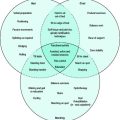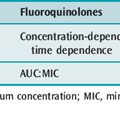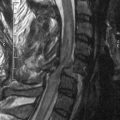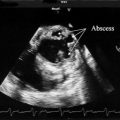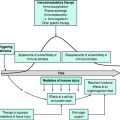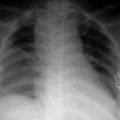Chapter 78 Biochemical terrorism
Biochemical terrorism is defined as the use of biological or chemical agents to intimidate, incapacitate or eradicate crops, livestock, civilian and military personnel.1 It is well suited for attack by poorer nations against the rich, and is known as a poor man’s atom bomb, or asymmetric method of attack. The large scale use of mustard and nerve gases in the Iran/Iraq war,2 the dissemination of nerve gas sarin on the Tokyo underground,3 and the discovery by UN inspectors in Iraq of SCUD missiles, rockets and aerial bombs primed with Botulinum and aflatoxins4,5 have highlighted the need for planning.
CHARACTERISTICS OF BIOLOGICAL WEAPONS (TableS 78.1 and 78.2)
Intended target effects are due either to infection with disease-causing micro-organisms and other replicative entities, including viruses, fungi and prions, or to the toxins they elaborate. Their effects depend on the ability to multiply in the person, animal or plant attacked.6 Sequelae depend on host factors (state of nutrition, immunocompetence) and environment (sanitation, temperature, humidity, water quality, population density).7
| Biological diseases | Chemical agents |
|---|---|
| Bacillus anthracis (anthrax) | Blisters/vesicants |
| Clostridium botulinum toxin (botulism) | Distilled mustard (HD) |
| Yersinia pestis (plague) | Lewsite (L) |
| Variola major (smallpox) | Mustard gas (H) |
| Francisella tularensis (tularaemia) | Nitrogen mustard (HN-2) |
| Viral haemorrhagic fever | Phosgene oxime (CX) |
| Coxiella burnetii (Q fever) | Blood |
| Brucella melitensis (brucellosis) | Arsine (SA) |
| Burkholderia mallei (glanders) | Cyanogen chloride (CK) |
| Ricin toxin (Ricinus communis – castor beans) | Hydrogen chloride |
| Staphylococcus enterotoxin B | Hydrogen cyanide (AC) |
| Niaph virus | Choking/pulmonary damage |
| Hantaviruses | Chlorine (CL) |
| Nitrogen oxide (NO) | |
| Phosgene (CG) | |
| Nerve | |
| Sarin (GF) | |
| Soman (GD) | |
| Tabun (GA) | |
| VX | |
| Incapacitating | |
| LSD | |
| Cannabinoids |
Table 78.2 Criteria for a successful biological weapon6
| Assailant |
CLASSIFICATION
ROUTES OF DISSEMINATION
DETECTION OF A BIOTERRORIST EVENT (Table 78.3)
This may be obvious if large numbers of military personnel become ill with similar syndromes, but any release is likely to be a covert event. Furthermore, genetic engineering may result in altered pathogenicity, incubation periods, clinical effects and response to treatment or immunisation.
SPECIFIC AGENTS
ANTHRAX
Anthrax8 is an acute infectious zoonosis caused by Bacillus anthracis, a Gram-positive, spore-forming bacillus. The infective dose is 8000–50 000 spores and routes of transmission include inhalation, ingestion and skin contact. Person-to-person transmission does not occur for the pulmonary form but secondary cutaneous lesions may occur after direct exposure to vesicle secretions. As spraying by aircraft is a potential threat to a large city, pulmonary exposure is the most likely route in a mass casualty situation.
CLINICAL FEATURES
Pulmonary exposure9,10
Gastrointestinal exposure
BOTULISM
Botulism5 is caused by Clostridium botulinum, an anaerobic Gram-positive bacillus that produces a neurotoxin. Seven forms of the toxin have been identified from A to G, but human botulism is due mainly to strains A, B and E. The neurotoxin contains a zinc protease that acts at the presynaptic terminal of the neuromuscular junction to prevent the fusion of vesicles of acetylcholine with the presynaptic membrane, therefore preventing release of acetylcholine and causing a flaccid paralysis. The LD50 for type A is 0.001 μg/kg.
TREATMENT
Aminoglycosides and clindamycin are contraindicated because of their ability to increase blockade.12 Administration of the trivalent (A, B, E) antitoxin should not be delayed while awaiting confirmation of the diagnosis. This horse serum has < 9% hypersensitivity reactions, and < 2% incidence of anaphylaxis. Skin testing is advisable.13 A heptavalent antitoxin is under investigation. Passive administration of neutralising antibody minimises further damage.14
SMALLPOX
Smallpox15 is an acute viral illness caused by variola virus (orthopoxvirus). The last documented case was in Somalia in 1977. It is transmitted from person to person via the airborne route. The infective dose is 10–100 virions, with an incubation period of 7–17 days.
In a non-immune society, the impact would be devastating16 as the person-to-person spread would be difficult to check, and many countries have very poor health structures with overcrowding in the cities. In addition, the impact of global travel would change the epidemic and allow it to move rapidly from continent to continent.
TREATMENT
Vaccination within 4 days of exposure.18 However, complications include:
Five groups are considered high risk for these complications. These are pregnancy, HIV infection, chemotherapy, eczema and immune disorders.19 In these cases, vaccinia immune globulin should be given simultaneously. Other treatments include:
PLAGUE
Plague21 is an acute bacterial disease caused by the Gram-negative Yersinia pestis, from the enterobacter species.22 Although usually transmitted by fleas causing bubonic and septicaemic plague, a bioterrorist event is likely to be airborne resulting in pneumonic plague. The infective dose is < 100 organisms, and has an incubation period of 2–3 days. It is unlikely that spread would be person to person.
CHARACTERISTICS OF CHEMICAL AGENTS
The North Atlantic Treaty Organization definition of a chemical agent is a ‘chemical substance which is intended for use in military operations to kill, seriously injure, or incapacitate people because of its physiological effects’.2 In addition to physiological effects, these agents promote psychological warfare.23
ROUTES OF DISSEMINATION
The principal hazard is inhalation of liquid, vapour, or droplets (0.6–5 microns). Delivery may be by artillery shells, missiles or aerial bombing. In the Tokyo subway attack in 1995, terrorists left plastic bags on the subway filled with sarin after piercing them with umbrella tips. There were 3796 casualties and 12 deaths.3
Toxicity depends on the concentration and time of exposure, is measured in units of concentration and time (mg/min m3), known as the Haber product.7 Most chemical agents are designed to penetrate the skin, respiratory epithelium and cornea, unlike biological agents. Penetration is promoted by thinner, more vascular, moister, hairy skin, and by high humidity, spills and aerosols.
RICIN
RISK GROUPS
PATHOGENESIS
SARIN
The route of exposure determines which clinical features (Table 78.4) appear first.24 Post inhalation respiratory and eye symptoms appear, whereas post cutaneous exposure diaphoresis and muscle fasciculation occur. Immediate first aid is to remove the patient from the area of danger to a well-ventilated area before removal of clothing and decontamination of the skin. This can be achieved using mists of water, or dilute sodium hypochlorite. Eyes are irrigated with water or normal saline.
| Mild | Rhinorrhitis |
| Dyspnoea | |
| Miosis | |
| Blurred vision | |
| Moderate | Diaphoresis |
| Drooling | |
| Bronchospasm | |
| Nausea, vomiting, cramps | |
| Weakness | |
| Twitching | |
| Headache | |
| Confusion | |
| Severe | Involuntary defecation/urination |
| Convulsions | |
| Respiratory arrest | |
| Coma, death |
Assessment follows airway, breathing and circulation. Patients with compromised airways, due either to direct effects or secondary to reduced level of consciousness, require intubation and positive-pressure ventilation. Aggressive suctioning may be needed for bronchial secretions.
TREATMENT
MUSTARD GAS
Mustard gas (C4H8Cl2S, Bis-(2-Chloroethyl) sulphide) is a yellow oily liquid at room temperature. It has a faint garlic odour and evaporates to form a vapour that penetrates clothing. Although mortality is low, poisoning tends to incapacitate. It is a bifunctional alkylating agent that is carcinogenic (oral cavity, larynx, bronchus), and irritates skin and mucosa (Table 78.5). Mustard gas is also myelotoxic (pancytopenia) and teratogenic. Assessment is similar to sarin.25
| Eyes | Lacrimation, conjunctivitis, photophobia |
| Skin | Erythema, blistering, partial to full-thickness burns |
| Respiratory tract | Rhinorrhoea, tracheobronchitis, bronchopneumonia |
| Systemic | Nausea, vomiting, diarrhoea, bradycardia, hypotension |
TREATMENT
Patients with large burns are resuscitated as any other burn; however, fluid losses are transudates, so protein losses are less.26 Pain control is important and frequently requires analgesics, such as morphine. Tense blisters are dressed with silver sulfadiazine. Mustard burns take at least 12 weeks to heal, but early excision and grafting does not reduce healing time.27,28 Eye lesions usually heal in 2 weeks, and are aided by topical antibiotics and saline irrigation. Oxygen, antibiotics for secondary pneumonia, physiotherapy and ventilation are the mainstays of treatment for respiratory effects.
1 Spencer R, Wilcox M. Agents of biological warfare. Rev Med Microbiol. 1993;4:138-143.
2 Evison D, Hinsley D, Rice P. Chemical weapons. BMJ. 2002;324:332-335.
3 KB O. Aum Shinrikyo: once and future threat? Emerg Infect Dis. 1999;5:513-516.
4 Zilinskas R. Iraq’s biological weapons: the past as future? JAMA. 1997;278:418-424.
5 Arnon SS, Schechter R, Inglesby TV, et al. Botulinum toxin as a biological weapon. Medical and Public Health Management. JAMA. 2001;285:1059-1070.
6 Beeching NJ, Dance DA, Miller AR, et al. Biological warfare and bioterrorism. BMJ. 2002;324:336-339.
7 WHO. Health Aspects of Chemical and Biological Weapons. Geneva: WHO, 2001;2.
8 Inglesby TV, Henderson DA, Bartlett JG, et al. Anthrax as a biological weapon. Concensus statement. JAMA. 1999;281:1735-1745.
9 Meselson M, Guillemin J, Hugh-Jones M, et al. The Sverdlovsk anthrax outbreak of 1979. Science. 1994;266:1202-1207.
10 Swartz M. Recognition and management of anthrax – an update. N Engl J Med. 2001;345:1621-1626.
11 English JF. Overview of bioterrorism readiness plan: a template for health care facilities. Am J Infect Control. 1999;27:468-469.
12 Schulze J, Toepfer M, Schroff KC, et al. Clindamycin and nicotinic neuromuscular transmission. Lancet. 1999;354:1792-1793.
13 Black R, Gunn R. Hypersensitivity reactions with botulinal antitoxin. Am J Med. 1980;69:567-570.
14 Amersdorfer P, Marks J. Phage libraries for the generation of anti-botulinum scFv antibodies. Methods Mol Biol. 2000;145:219-240.
15 Breman J, Henderson D. Poxvirus dilemmas: monkeypox, smallpox and biological terrorism. N Engl J Med. 1998;339:556-559.
16 Gani R, Leach S. Transmission potential of smallpox in contemporary populations. Nature. 2001;414:748-751.
17 Henderson DA, Inglesby TV, Bartlett JG, et al. Smallpox as a biological weapon: medical and public health management. JAMA. 1999;281:2127-2130.
18 Vaccinia vaccine: recommendations of the Immunization Practices Advisory Committee (ACIP). MMWR Recomm Rep. 1991;40:1-10.
19 Redfield RR, Wright DC, James WD, et al. Disseminated vaccinia in a military recruit with human immunodeficiency virus. N Engl J Med. 1987;316:673-676.
20 Lalezari JP, Stagg RJ, Kuppermann BD, et al. Intravenous cidofovir for peripheral cytomegalovirus retinitis in patients with AIDS: a randomised, controlled trial. Ann Intern Med. 1997;126:257-263.
21 Inglesby TV, Dennis DT, Henderson DA, et al. Plague as a biological weapon: medical and public health management. JAMA. 2000;285:2763-2773.
22 Perry R, Fetherston J. Yersinia pestis – aetiologic agent of plague. Clin Microbiol Rev. 1997;10:35-66.
23 Wesseley S, Hyams K, Bartholomew R. Psychological implications of chemical and biological weapons. BMJ. 2001;323:878-879.
24 Tu A. Overview of sarin terrorist attacks on Japan. ACS Symp Ser. 2000;745:304-307.
25 Newman-Taylor A, Morris A. Experience with mustard gas casualties. Lancet. 1991;337:242.
26 Mellor S, Rice P, Cooper G. Vesicant burns. Br J Plast Surg. 1991;44:434-437.
27 Eldad A, Weinberg A, Breiterman S, et al. Early non-surgical removal of chemically injured tissue enhances wound healing in partial thickness burns. Burns. 1998;24:166-172.
28 Rice P, Brown RF, Lam DG, et al. Dermabrasion: a novel concept in the surgical management of sulphur mustard injuries. Burns. 2000;26:34-40.

